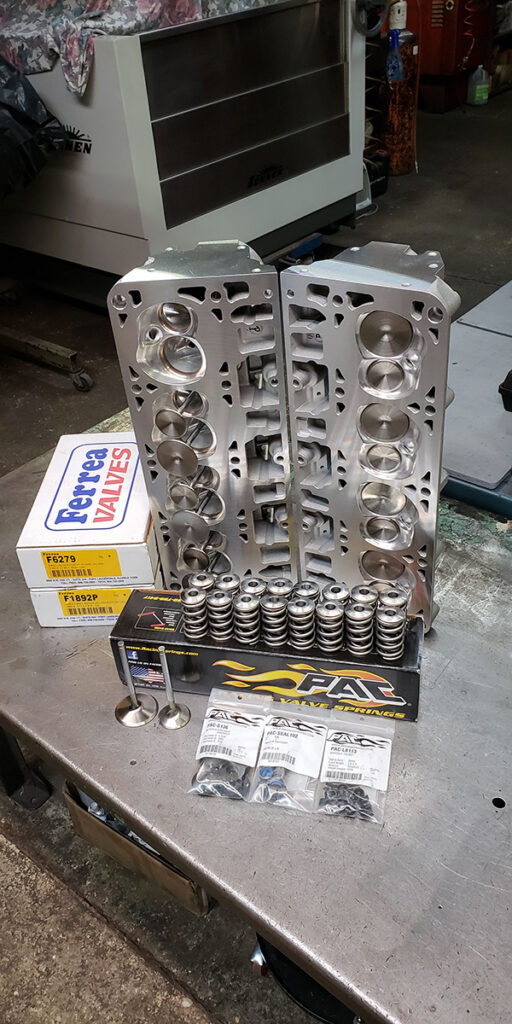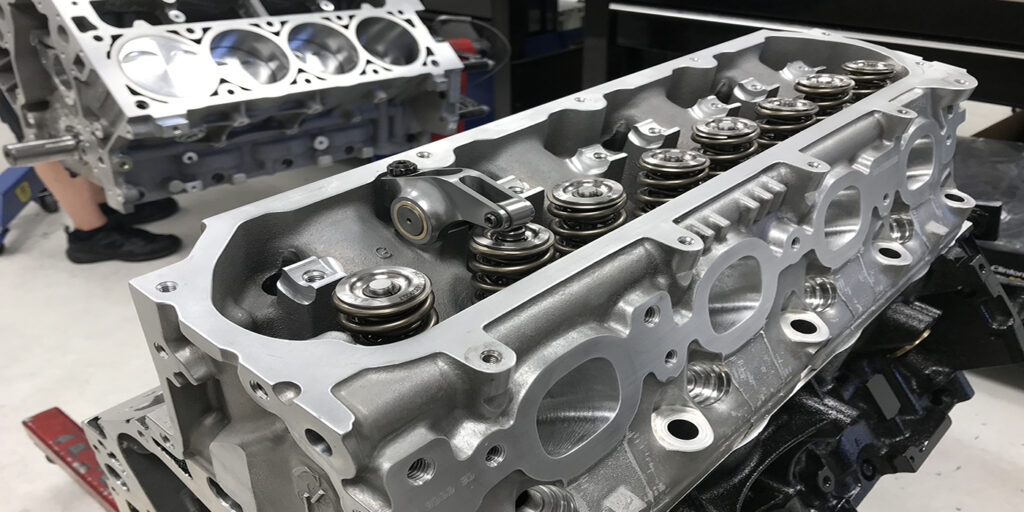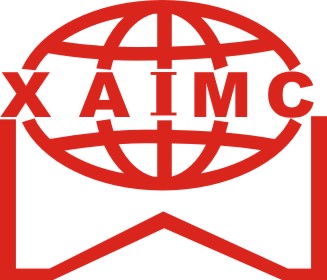By Eric Garbe on Jan 28, 2022
I’m not sure anyone ever complained about the performance of a Gen III or Gen IV small block Chevy as they came from the factory. Let’s face it, they run good and some of them are downright wicked. But, thanks to engine builders and aftermarket performance parts, there’s always a way to make them run better – and with a lot more horsepower!

Let’s first look at the rocker arms. All Gen III and Gen IV LS rocker arms have a 1.7:1 ratio, except for the Gen IV LS7 rocker arms, which bumped to a 1.8:1 ratio. Most Gen III and Gen IV rocker arms are all the same, with the exception of offset intake rockers, a necessary modification to allow for larger intake valves on some of the heads, including the LS7.
The factory rocker arms are pretty tough, but most builders who are shooting above the 500 hp range recommend going with forged or billet rocker arms. The factory rocker arms are made from powdered metal, which cannot stand up to the same abuse as forged or billet, but the real weak link of the factory rockers at high rpm is in the trunnion shaft and bearings. The trunnion shafts are made of powdered metal, and perhaps a more critical issue, the rocker arm pivot bearings are uncaged bearings, held in by pressed-in tin cups.
Having these come apart and distribute themselves throughout the engine is less than desirable. Luckily, trunnion upgrade kits are plentiful, offering improved trunnion material and caged needle bearings or bushings, depending on your preference. Installation tools are also available, so anyone can easily upgrade their factory rocker arms to eliminate this weak point. For any LS, high-horse or not, it’s a worthwhile upgrade.
Depending on the cylinder head, the rocker arm mounting pedestals may be integral to the head, or it may require separate pedestal rails. If aftermarket rocker arms are used, they are available for either style of head.
Of course, you can’t think rocker arm without thinking pushrod, which leads us to one of the most common questions asked regarding LS valvetrain components. “Can I use stock pushrods and rocker arms when upgrading to a performance cam?” Scott Stier, LS engine specialist at Elgin Industries, lends his expertise in the answer.

“To experience the full benefits of a performance camshaft, matched supporting components will complete the package,” Stier says. “Stock OEM GEN III, IV and V valvetrains are compatible with most mild performance engine builds, largely due to the advancement in technology over the old GEN I and IIs. However, further advantages can be gained by upgrading to performance engineered products.”
Getting deeper into the subject, Stier explained that most performance camshafts have a stock base circle, and stock OEM 5/16˝ x 7.400˝ x .075˝ wall pushrods have been run at 7,000 rpm. However, when running at extended high rpms, a quality pushrod material is the key to valvetrain stability.
“When building a performance engine, there are many reasons the rocker arm geometry can become modified,” Stier says. “To compensate, the pushrod length will need to be changed and material should be reconsidered. With high-pressure valve springs, thicker wall pushrods are recommended for stability. A hardened material will be required when installing roller rocker arms / pushrod guide plates. Elgin manufactures performance 5/16˝ pushrods in lengths varying by .025˝, and in various wall thicknesses up to .110˝. These pushrods are manufactured from materials up to 4130 chromoly and offered with nitrocarburizing, carbonitriding and Elgin’s super-cryogenic “BLACK ICE” treatment.”
Stock LS rocker arms easily last for a quarter-million miles under normal driving conditions. However, when upgrading the cam, the builder should at least use new OEM rockers. For most performance applications, the stock OEM rocker has been capable of 7,000 rpm. If the camshaft requires very high spring pressures, then the builder might consider new trunnions for the stock rocker body, or upgrade to performance roller-tip rockers. Elgin stock rocker arms are OEM.

Here are scenarios that would change the required pushrod length:
- Some performance cams, such as LSX crate motors, have a non-stock base circle.
- Change in head gasket thickness; there can be a .050˝ difference between composite and MLS.
- Having the cylinder heads milled or the block decked.
- Changing to aftermarket heads or modifying the combustion chamber/valve seat.
- Changing to a bigger-lift cam and roller rockers.
Elgin’s one-piece thick-wall pushrods offer a solution:
- Manufactured from 4130 aircraft quality seamless chromoly.
- Centerless ground and fully hard-turned 210° radius ends.
- Through-hardened and carburized tube with greater than 58 RC hardness and held to .005˝ maximum runout.
- Up to 40% greater column strength for superior strength and durability and increased stiffness. This virtually eliminates the compression and deflection that could lead to valve float and possibly catastrophic failure.
- Black oxide coated.
Roller tip rockers are also a common upgrade, and Stier outlined some installation tips
- Unless the rockers are “drop-in style,” this is a job best done with the engine out of the vehicle.
2. When installing a large performance cam and roller-tip rockers, the builder needs to verify that the roller tip is evenly contacting the valve tip for the duration of the cam/valve lift cycle. This includes both the top-to-bottom and side-to-side motions.
3. Top-to-bottom: This is most easily done by applying assembly ink to those mating surfaces. Next, spin the engine over for the duration of the cam lift cycle. Then check the witness marks between the roller and valve tip. While using an adjustable-length pushrod checker, the builder can change the pushrod length to achieve even contact between the roller and valve tip.
4. Side to side: Many roller-tip rocker arms do not mate to the stock aligning stands, nor do they have any aligning provisions at the roller tip. Without those stock alignment provisions, the rocker is free to rotate out of contact from the valve tip. As an alternative, the rocker body position can be stabilized by controlling the pushrod location. Pushrod guide plates will need to be installed and held in place by the base of the rocker arm studs. Hardened pushrods will need to be installed to ride against the guide plates.
Active Fuel Management (AFM), or the deletion of it, is one of the more common LS modifications, and Stier explained that this is one of the most common upgrades by engine builders.

“GM’s Active Fuel Management has brought ‘4 cylinder’ fuel-economy to the V8 LS engine, however, some owners choose to delete the AFM to use all 8 cylinders all the time,” Stier says. “Other owners are choosing to delete the AFM because of repeated AFM lifter failures. When a builder is asked to retain the AFM in a rebuild, it might only last a few hundred miles before failing again. A collapsed lifter spring is often blamed on an internal engine failure. However, the lifter spring is a mechanical fuse for an electrical issue. The spring will collapse when the vehicle computer sends a signal to the lifter to engage or disengage at the wrong cam timing. The spring collapses to protect valve-to-piston clearance and save the engine from further damage.
“This is a commonly reported issue on 10 to 15-year old Denali/Escalades from the rust belt. Though these are still considered higher value vehicles, their electricals might be corroded beyond practical use. The usual cause for lifter failure is an intermittent ground-fault-interrupt in a control module. The electrical can be time-consuming to diagnose. Other causes include sludge/debris in the VLOM/filter/oil galley. Engine builders should also watch out for evidence of a previous lifter guide failure, as the lifter bore might have been damaged.”
When you talk camshaft, lifters, pushrods, and rocker arms, normally you’ve got the bases covered, but Stier points out something not to forget.
“The most overlooked/improperly reused components are the roller lifter guides,” he says. “The polymer in these guides fatigues over time, allowing the lifter to spin sideways in the bore. It will only take few moments for the lifter to grind into the cam lobe and send metal shavings to every corner of the engine. Elgin LS lifters and lifter guides are OE – these are the same parts supplied to the GM engine assembly lines.”
There you have it – the LS valvetrain. They were always good, and now you know the upgrades to make them better, or make them the best.


